It's all about the classical music composers and their works from the last 400 years and much more about music. Hier erfahren Sie alles über die klassischen Komponisten und ihre Meisterwerke der letzten vierhundert Jahre und vieles mehr über Klassische Musik.
Total Pageviews
Sunday, January 8, 2023
Carl Czerny - Piano Concerto in a minor, Op. 214 (1829)
Carl Czerny - his music and his life
Carl Czerny was an Austrian composer, teacher, and pianist of Czech origin whose music spanned the late Classical and early Romantic eras. His vast musical production amounted to over a thousand works and his books of studies for the piano are still widely used in piano teaching. He was one of Ludwig van Beethoven's best-known pupils.
Carl Czerny was born in Vienna (Leopoldstadt) and was baptized in St. Leopold parish. His parents were of Czech origin; his mother was Moravian. His parents spoke Czech with him. Czerny came from a musical family: his grandfather was a violinist at Nymburk, near Prague, and his father, Wenzel, was an oboist, organist and pianist. When Czerny was six months old, his father took a job as a piano teacher at a Polish manor and the family moved to Poland, where they lived until the third partition of Poland prompted the family to return to Vienna in 1795.
As a child prodigy, Czerny began playing piano at age three and composing at age seven. His first piano teacher was his father, who taught him mainly Bach, Haydn and Mozart. He began performing piano recitals in his parents' home. Czerny made his first public performance in 1800 playing Mozart's Piano Concerto No. 24 in C minor.
Studies with Beethoven
In 1801, Wenzel Krumpholz, a Czech composer and violinist, scheduled a presentation for Czerny at the home of Ludwig van Beethoven. Beethoven asked Czerny to play his Pathétique Sonata and Adelaide. Beethoven was impressed with the 10-year-old and accepted him as a pupil. Czerny remained under Beethoven's tutelage until 1804 and sporadically thereafter. He particularly admired Beethoven's facility at improvisation, his expertise at fingering, the rapidity of his scales and trills, and his restrained demeanour while performing.
Czerny's autobiography and letters give many important references and details of Beethoven during this period. Czerny was the first to report symptoms of Beethoven's deafness, several years before the matter became public. Of his first meeting with Beethoven, he wrote: "I also noticed with that visual quickness peculiar to children that he had cotton which seemed to have been steeped in a yellowish ointment, in his ears."
Beethoven selected Czerny as pianist for the premiere of the former's Piano Concerto No. 1 in 1806 and, at the age of 21, in February 1812, Czerny gave the Vienna premiere of Beethoven's "Emperor" Piano Concerto. Czerny wrote that his musical memory enabled him to play virtually all of Beethoven's piano works by heart without exception and, during the years 1804–1805, he used to play these works in this manner at Prince Lichnowsky's palace once or twice a week, with the Prince calling out only the desired opus numbers. Czerny maintained a friendship with Beethoven throughout his life, and also gave piano lessons to Beethoven's nephew Carl.
Later career
Teacher and composer
At the age of fifteen, Czerny began a very successful teaching career. Basing his method on the teaching of Beethoven and Muzio Clementi, Czerny taught up to twelve lessons a day in the homes of Viennese nobility. His 'star' pupils included Theodor Döhler, Stephen Heller, Anna Sick,Sigismond Thalberg, and Ninette de Belleville. In 1819, the father of Franz Liszt brought his son to Czerny, who recalled:
He was a pale, sickly-looking child, who, while playing, swayed about on the stool as if drunk...His playing was... irregular, untidy, confused, and...he threw his fingers quite arbitrarily all over the keyboard. But that notwithstanding, I was astonished at the talent Nature had bestowed upon him.
Liszt became Czerny's most famous pupil. He trained the child with the works of Beethoven, Clementi, Ignaz Moscheles and Johann Sebastian Bach. The Liszt family lived in the same street in Vienna as Czerny, who was so impressed by the boy that he taught him free of charge. Liszt was later to repay this confidence by introducing the music of Czerny at many of his Paris recitals. Shortly before Liszt's Vienna concert of 13 April 1823 (his final concert of that season), Czerny arranged, with some difficulty (as Beethoven increasingly disliked child prodigies) the introduction of Liszt to Beethoven. Beethoven was sufficiently impressed with the young Liszt to give him a kiss on the forehead. Liszt remained close to Czerny, and in 1852 his Études d'exécution transcendante were published with a dedication to Czerny.
Czerny left Vienna only to make trips to Italy, France (in 1837, when he was assisted by Liszt)[ and England. After 1840, Czerny devoted himself exclusively to composition. He wrote a large number of piano solo exercises for the development of the pianistic technique, designed to cover from the first lessons for children up to the needs of the most advanced virtuoso. (see List of compositions by Carl Czerny).
Death
Czerny died in Vienna at the age of 66. He never married and had no near relatives. His large fortune he willed to charities (including an institution for the deaf), his housekeeper and the Society of Friends of Music in Vienna, after making provision for the performance of a Requiem mass in his memory.[20]
Friday, January 6, 2023
Musical Double Takes: Bach, Bentzon, Czerny, Rekhin, Rheinberger, and Madsen
by Georg Predota, Interlude
Johann Sebastian Bach

Score of Bach’s Well-Tempered Clavier
The Well-Tempered Clavier, Book I, and the Well-Tempered Clavier, Book II are rightfully considered among the most important works in the history of Western music. These works have been highly influential, and various composers have composed complete sets. However, I want to introduce you to composers, who like Bach, did a musical double take and composed multiple sets of preludes and/or fugues in all keys.
Johann Sebastian Bach amazingly wrote two complete sets of preludes and fugues, but the Danish composer and pianist Niels Viggo Bentzon (1919-2000) composed 14 separate sets of 24 preludes and fugues! By any stretch of the imagination, that is an astonishing number of works. They are collectively known as “The Tempered Piano,” and represent 20th-century examples of music written in all 24 major and minor keys.
Niels Viggo Bentzon
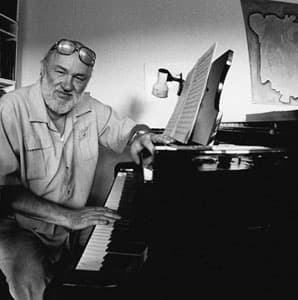
Niels Viggo Bentzon
In an interview, the composer referred to his “Tempered Piano as a series of aesthetic paradoxes. By this, I mean an almost complete transcription of the building blocks of classical music. If a Fugue from one of the tempered pianos is crammed with imitation, one can be dead sure that the phenomenon functions differently than in Bach or Handel. In The Tempered Piano, a theme may appear in its entirety at the beginning of the piece, only to change gradually, almost out of recognition, as that particular piece winds to an end.” The composer was once asked about the exact meaning of his compositions, and he responded, “I have to admit with shame that I am virtually seldom inspired. It is just a matter of getting hold of a pencil and firing away.” Bentzon has also composed 24 Symphonies—not ordered according to keys—operas, ballets, concertos, string quartets, and many additional piano works.
Carl Czerny (1791-1857) came from a very musical family. His grandfather was a professional violinist, and his father an oboist, organist, and pianist. Little Carl was a child prodigy, and he started piano lessons with his father at the age of three. By the age of ten, he became a student of Beethoven, and he maintained a relationship with the composer throughout his life. At the core of Carl Czerny’s early piano studies stood Bach’s Well-Tempered Clavier. We know that he carefully studied this collection during his early lessons with his father. Likewise, the WTC had been fundamental to Beethoven as well.
Carl Czerny
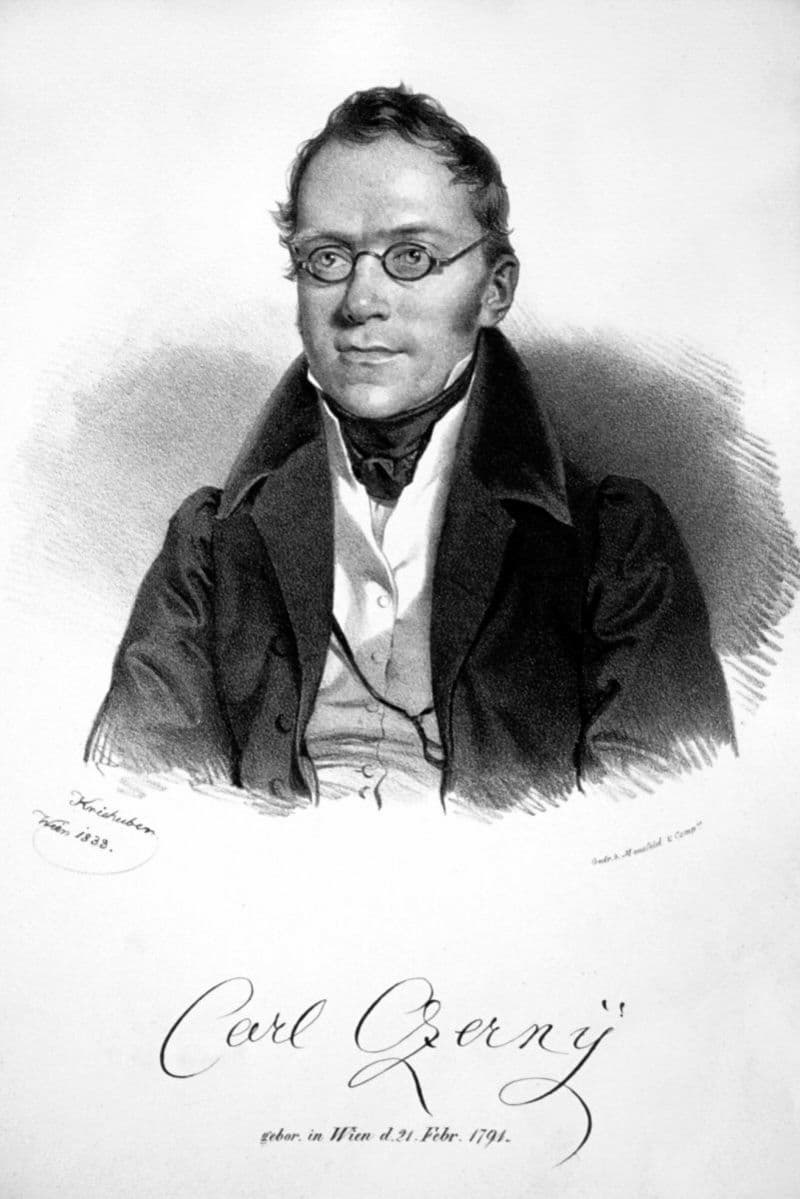
Carl Czerny, 1833
Today we know that Czerny produced a collection of exercises and studies that might rightfully be described as “industrial.” He composed a number of fugues early on that became part of his performing repertoire as a concert pianist. Czerny composed at least three complete sets of preludes and fugues in all 24 major and minor keys. The most impressive collection emerges in his Op. 856, in which he tried to update this archaic genre. It has been suggested that Czerny dedicated this set to Liszt, who had been Czerny’s most outstanding student. We don’t know how Liszt reacted to the dedication, but critics were generally dismissive. Robert Schumann “accused Czerny of insisting on an obsolete genre without renewing in any way the classical models established by Bach.” He even found fault with Czerny’s creativity, with the way he avoided the formal procedures that make the fugue interesting: transformations of the subject through augmentation, diminution, inversion, crab canons, and layering two or more themes or using subject and countersubject in the Handel fashion. Although homages to Bach and Handel are frequent, Czerny does attempt to dress his use of strict counterpoint in the characteristics of the emerging gallant style.
Igor Rekhin
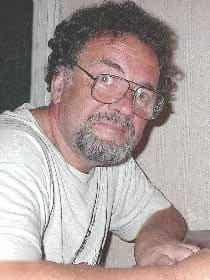
Igor Rekhin
Collections of preludes and fugues in all major and minor keys are not exclusively tied to keyboard instruments. Such is the case with Russian composer Igor Rekhin, born in 1941. Rekhin fashioned two complete sets: the 24 Caprices for solo cello, and 24 Preludes and Fugues for guitar. Rekhin composed over 100 works in various genres, but the 24 Preludes and Fugues for solo guitar are unique. The initial idea emerged in 1985, on the 300th anniversary of Bach’s birth. The composer writes, “At the beginning of the work on the prelude and fugue I imagined a musical idea that I subsequently wrote down. I tested that idea on the piano and then elaborated it on the guitar. I quickly found that many ideas that sounded good on the piano were difficult to transplant to the guitar. That path was ineffective, so I changed my approach and just picked up the guitar and began to look for polyphonic solutions.” Critics were enthusiastic, and suggested that the collection “opened the concert repertoire for guitar in a completely new way. Maintaining the tradition of the old polyphonic masters of the lute in a homogeneous connection with the latest styles and trends, including pop to avant-garde, this cycle gives guitarists the opportunity to be placed on par with other traditional concert instruments such as the piano.”
Josef Rheinberger
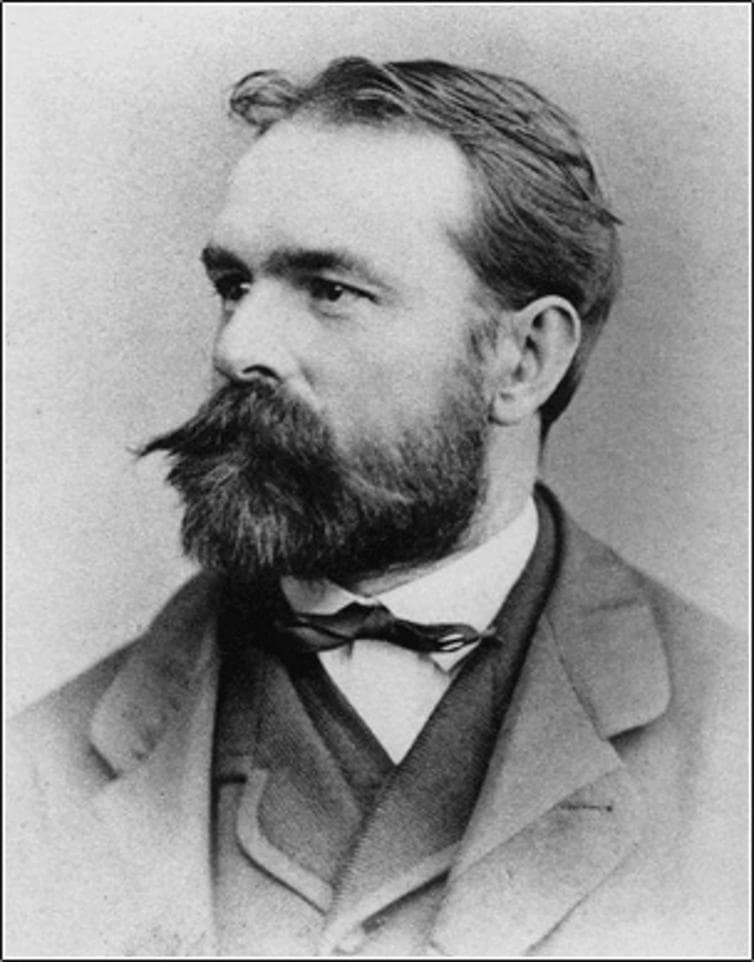
Joseph Gabriel Rheinberger
Joseph Gabriel Rheinberger (1839-1901) was born in Liechtenstein, and he inherited his musical talents from his mother. He started lessons with the local organist at age five, and two years later he was appointed organist in Vaduz and was writing his first compositions. Against the wishes of his family, Rheinberger went to Munich to continue his studies, and he subsequently held a number of important posts in that city. Among them was the appointment as the instructor in counterpoint at the Royal Academy of Music, and his students included Engelbert Humperdinck, Ermanno Wolf-Ferrari, and Wilhelm Furtwangler. Organ music formed the core of Rheinberger’s compositional efforts, and he espoused a conservative musical style influenced by Bach, Mozart, and Haydn. As such, it is hardly surprising to find two sets of compositions in all major and minor keys. His 24 Fughettas Op. 123 are essentially lyric miniatures in a highly contrapuntal style. Rheinberger was also looking to compose 24 organ sonatas in all major and minor keys but sadly died having completed only 20.
Trygve Madsen
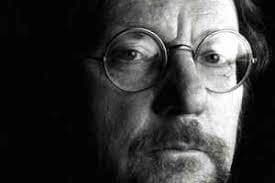
Trygve Madsen
The Norwegian composer Trygve Madsen was born in 1940. “I had the good fortune to be born into a family of musicians,” he explains, “my grandfather and his seven sons were all professional musicians. At six I began playing the piano and began composing at about the same age. As my piano playing developed I became increasingly involved in the daily music-making at home, joining in anything from popular songs to sonatas.” Madsen studied with the organist Johannes Almgren, who had been a student of the famous theoretician Hermann Grabner, who in turn had been a student of Max Reger. However, Madsen was not only interested in counterpoint but from an early age, he was also attracted by jazz. He listened to recordings by Erroll Garner, Dizzy Gillespie, Charlie Parker, and Oscar Peterson for hours on end. A clear formative musical influence was provided by Sergei Prokofiev, with Madsen writing ”That was what made me a composer. I realized that this was the way for me; everything came together in Prokofiev’s music. It was like coming home! Prokofiev shaped and molded his musical material in his own way with superb craftsmanship, without violating the rules of music – often infusing it with a liberating sense of humour.” Madsen composed two complete sets of music in all major and minor keys; 24 Preludes, Op. 20 and 24 Preludes and Fugues, Op. 101. He began work on the full cycle of 24 Preludes and Fugues in 1995, with a clearly laid out play of the order in which the keys would be presented. Bach had ordered his set chromatically, while Shostakovich and Chopin preferred an order according to the cycle of fifths. Madsen, ingeniously, based his collection on the astrological treatise “The Harmony of the Spheres,” by the German astronomer Johannes Kepler. Kepler suggested, “the relationship between the planets corresponds to the relationship between musical intervals.” Basing his set on an astrological point of view, Madsen’s system “consists of a row of descending minor thirds interrupted by an ascending tritone. In the next episode of musical double takes, we find music by Charles-Valentin Alkan, Lera Auerbach, Adolf von Henselt, Vsevolod Zaderatsky, Dmitry Shostakovich, Johann Nepomuk Hummel, Louis Vierne, Friedrich Kalkbrenner, and Nikolai Kapustin.
